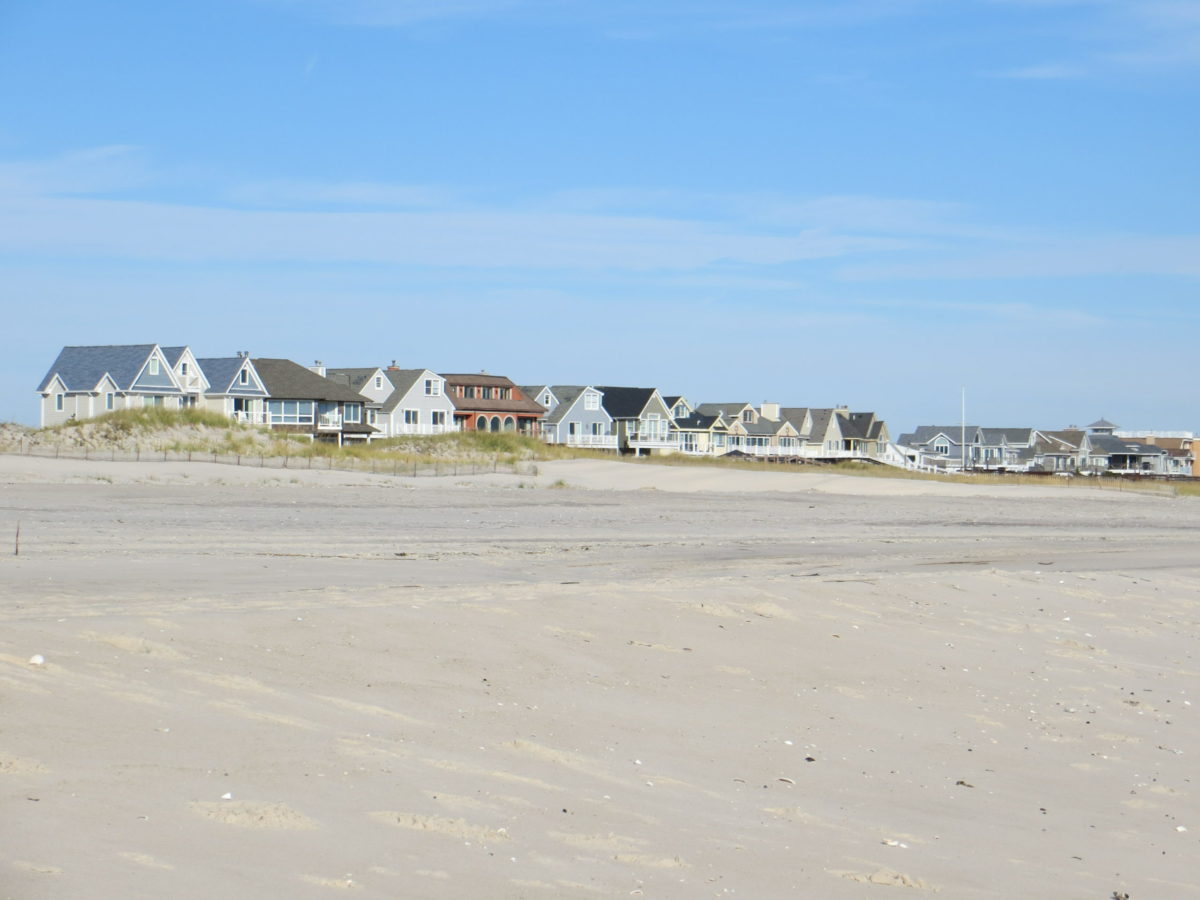
Effective January 1, 2022, the Federal Housing Finance Agency increased the baseline conforming loan limits for single-family homes in high-cost areas from $647,200 to $970,800.
According to published reports, the nationwide median single-family home sales price in November, 2021 was approximately $379,000 as compared to $599,000 in Suffolk County.
All of the New York Metropolitan area is considered a high-cost area.
Fannie Mae was first chartered by the federal government in 1938 to help ensure a reliable and affordable supply of mortgage funds throughout the country. Freddie Mac was chartered by Congress in 1970 for the same reasons.
Fannie and Freddie do not originate loans. They buy loans at a discount from financial institutions that originate the loans, package them, and sell these guaranteed loans on the secondary market to investors.
This serves to increase the deposits of the original lenders, allowing them to make more loans, and make home purchasing more affordable. Fannie and Freddie can buy loans up to the maximum loan limits. Loans that do not meet these limits are called non-conforming or “jumbo loans.” Those that the original lender does not sell to Fannie and Freddie are called portfolio loans.
The increase in the loan limits comes on the heels of a surge in home-buying and prices since the advent of Covid-19. At the same time, interest rates on long-term mortgage loans are creeping up, and the Federal Reserve will soon increase interest rates due to inflation.
For opinions that the new limits might have on purchases of single family homes on the North and South Forks of Eastern Long Island, I reached out to real estate brokers, mortgage brokers, a title attorney, and public officials.
Sarah Minardi, Associate Broker, Saunders & Associates: “I don’t think the increases in Fannie and Freddie loan limits have much to do with the market In the Hamptons. Even with cheap rates, less than 50% of the transactions are financed. As far as increases in interest rates are concerned, I don’t think the difference between 3% and 4% is going to kill anything. My suggestion is to get as long of a rate lock as possible, and certainly not to lock a rate until you are in contract and understand the dynamics of the seller in regard to closing times. Demand is overshadowing everything else. If you get the house you don’t care about the rate. Mortgages are anything under $2 million, and very much under $1 million. The average buyer out here does not get fixed-rate mortgages. They are taking out interest-only mortgages between 2 and 3 percent.”
Melissa Cohen, William Raveis Mortgage: Ms. Cohen, who has forty years of experience with mortgages, provided a very broad picture of what is occurring today within the context of the ebbs and flows of the real estate market over periods of time. She offered, due to an overheated economy that has resulted in high inflation, the Federal Reserve will increase interest rates. She added that if rates return to what they were before Covid, the market was pretty active then, and what attracted buyers to the East End, the ability to work from home and the life-style amenities it offers, will continue. With respect to the increase in the Fannie and Freddie loan limits, while she did say that these new limits will enable homebuyers in the less expensive areas of the Hamptons and the North Fork, she quickly added, effective April 1, 2022, FHA has announced targeted increases to Fannie Mae and Freddie Mac’s upfront fees for certain high balance loans and second home loans. She also pointed out that while these fees do not go into effect until April 1st, lenders are already factoring this in where properties fall into these categories.
Robert Nelson, Executive Managing Director, Brown Harris Stevens: “The increased loan limits with Fannie and Freddie are very helpful to our market. Especially for first-time buyers and essential community workers looking to purchase homes. While entry-level homes are limited, the ability to purchase with lower down payments and lower interest rates, should be of great help to our community.”
Ernest Cervi, Regional Vice President, East End: “I think the increased limits are a great thing for consumers. Currently, we have such little inventory overall and very slight inventory below $1 million, I don’t think the initial impact will be noticeable. Other markets will be hugely impacted and further increase the buying cycle.”
Judi Desiderio, Chief Executive Officer, Town & Country Real Estate: “The entry level home buyers on both the North and South Forks can benefit. Since the North Fork has more inventory under $1million than does the South Fork, we will most likely see it utilized there. I applaud the government for recognizing the challenges many face for something as essential as a home.”
Joseph Kazikas, Managing Broker, Rosehip Partners Real Estate: “I don’t believe the new loan limits will have a measurable impact on purchases, other than to save lower end buyers some money.”
Phillip V. O’Connell, Executive Managing Director Brown, Harris, Stevens of the Hamptons: I believe the change is very positive; however, due to the price of homes in the East End community, the impact will be minimal.”
Ed Reale, Sotheby’s International Realty, Brokerage Manager: “I don’t think the increase will have any major impact on purchasing. Rates have been very low for years and non-Freddie or Fannie mortgages have been readily available. The lower rates have allowed for more buying power.”
Htun Han, Hamptons Realty Group, Principal Broker: “It will surely help more local families in their struggle to find homes they can afford to carry. However, a larger mortgage will translate to a larger carrying cost which includes mortgage payment, property taxes, and insurance. I worry about how sustainable in the long run it is for a young family to carry a debt load that has essentially jumped by 150%. Perhaps more importantly, in the Hamptons, a million dollars is sadly for “entry level” homes, and demand far outstrips supply. I doubt if the increase will make much of a difference in the Hamptons market.”
Deirdre Devita, Associate Broker, Sotheby’s International Realty: “I think the increases will appreciably affect purchasing. A much larger proportion of sales in the Hamptons are under $1 million than most people recognize. As an example, the median price in the Westhampton area for the third quarter of 2021 only just hit $1,050,000, whereas, for the four years before that, it was under $1 million. People buying property in this price range are more likely to require financing versus those buying homes valued at over $2 million and above, and often these buyers are stretching to get into the Hamptons market. This change will help them to keep up with the price increases that we have witnessed over the past two years. Now all we need is the inventory to accommodate them.”
Steven Bodziner, Counsel for Bridge Abstract: “I believe the increased limits will affect the market, possibly, in a negative way. Human nature is to maximize, sometimes dangerously so, leveraging on home purchases. With more money financed, that 20% down can buy “more house.” Great strategy until the next downturn.”
Patti Romanzi, CEO, Par East Mortgage Company: Ms.Romanzi suggested that the pending increase in interest rates will affect first-time buyers. But on the other hand, the rate increases may also serve to stabilize the market and bring home prices to more reasonable levels. She also feels that local buyers will continue to have to compete with buyers from outside the area. In addition, the higher rates are likely to reduce the advantage of refinancing that has resulted from lower interest rates. With respect to the Fannie Mae and Freddie Mac loan limit increases, she points out that with the fees to be paid on high-balance and second-home properties, it might make more economic sense to finance a purchase with a “jumbo” loan. She stated, based upon her experience, all purchases financed by “jumbo” loans are non-contingency purchases. As points of information, Ms. Romazi stated that Fannie Mae and Freddie Mac can buy loans with a loan to value ratio up to 95% with mortgage insurance and based upon credit scores. The Federal Housing Administration will insure loans under prescribed circumstances with a loan to value ratio up to 96.5%.
Patti Frank, GuardHill Financial Corp: Based on my experience as a licensed mortgage banker active in the Hamptons for the past twenty-eight years, I believe that the housing market on the East End of Long Island will stay strong for years to come. Ms. Frank stated that while thirty-year interest rates are going to increase, by the end of the year, will still be historically low. She added that housing prices, especially building materials, have shot up. Real estate construction may lag slightly until materials and lumber return, then start to rebound strongly, given that the Federal Reserve will stop buying bonds and mortgages in the open market, and driving down interest rates. “There’s a massive exodus to the Hamptons that continues unabated because of remote work. If you can live in the Hamptons, have more space, and make almost the same amount of money, why not?”
Brian Scott Cohen, Guaranteed Rate: “The New Year has brought a new level of mortgage interest rates which has notched the 30 year fixed to an average of 3.22% (according to the Fannie Mae average week ending January 6th) coming off pandemic lows which were 2.65% in January 2021. In 2022 the Federal Reserve is predicted to raise interest rates 3-4 times with its first anticipated raise in March, 2022. While this may occur, rates are historically still low. With limited inventory and low rates, 2022 should continue to be super busy and very competitive among buyers.”
Assemblyman Fred Thiele, New York State Assembly District One: “Affordable housing on Long Island and the East End is in crisis. There is no magic wand that we can wave to suddenly solve the problem. Rather, it will require a series of policies that must be implemented to reverse the trend of increasing housing costs. The increase in federal home loan limits is one of those initiatives that can improve affordability. Given the unique real estate market on the South Fork, I would like to see an even higher limit here. Nevertheless, increased eligibility for home loans, coupled with new initiatives like the Peconic Bay Region Community Housing Fund, can work together to make a difference in providing housing for local families who are the backbone of our communities.”
Scott Russell, Supervisor, Town of Southold: “I am sure the Federal Housing Finance Agency will have a difficult time explaining to the taxpayers why it is putting their money at risk backing mortgages extended to buyers of homes which cost nearly $1 million. Regardless of how robust the housing market is, if you can afford to look in that price range, you don’t need government-backed loans. During the economic crisis of 2008, both Fannie Mae and Freddie Mac cost the taxpayers nearly 200 billion dollars just to remain solvent and the debt limit was much lower. Overall, it is a poorly thought out plan that undermines itself. Because these loans are government-backed, the risk to the lenders will be less which means the interest rates will be lower. If people can borrow at a lower interest rate, then they will be willing to pay more for a house, pushing prices even higher.”
New York State Senator Anthony Palumbo, 1st Senate District: “The East End of Long Island is one of the hottest markets, most expensive regions in the state for real estate. This factor, combined with the recent surge in home prices has greatly hindered the ability of area residents to afford purchasing their first home. The Fannie Mae and Freddie Mac loan rate increases can help first-time home buyers, veterans and others afford to purchase a home in our community, and we must continue our efforts to make the dream of home ownership more attainable for residents.”
In an article that appeared in the January 6th issue of the Wall Street Journal, it stated: “The average rate for a thirty-year-fixed-rate loan was up from 3.11% last week according to mortgage finance giant Freddie Mac. A year ago, mortgage rates stood at 2.65%.”
Comment: On September 6, 2008, as a result of the mortgage crisis, the federal government put Fannie Mae and Freddie Mac into conservatorship. The history of the mortgage crisis of 2008 and its effect on Fannie Mae and Freddie Mac is the subject of the Federal Reserve of a New York staff report of March, 2015.






